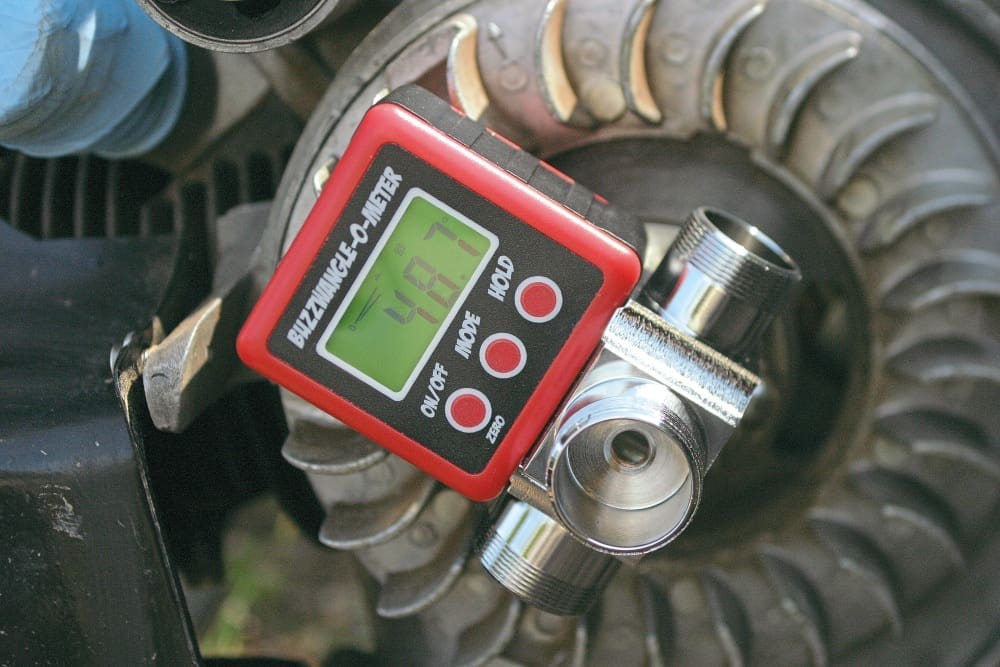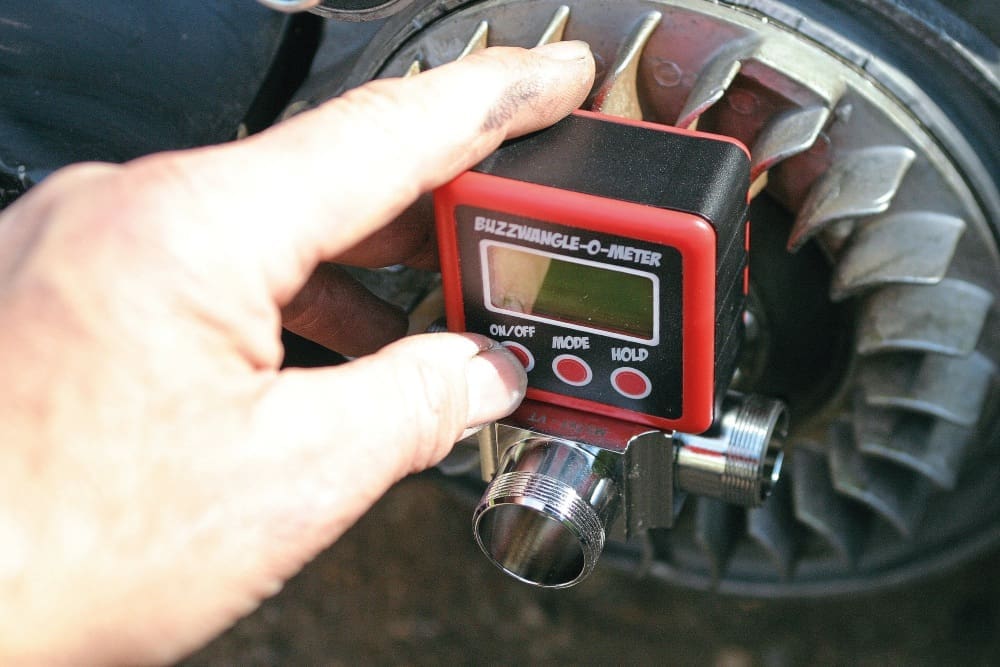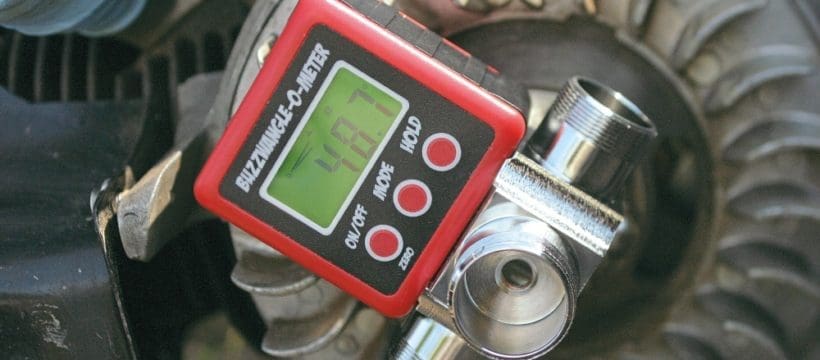When building a Lambretta engine, carrying out upgrades or just general servicing, it’s vital that the ignition timing is set correctly. This is the point at which the compressed fuel/air mixture in the combustion chamber is ignited to give optimum performance and reliability.

There are several ways in which timing can be set and checked, but the basic way is what’s known as static timing. In other words, the timing is set and adjusted without the engine being run to get you to a base setting; this can then be fine-tuned using a strobe or timing light with the engine running at a set rpm.
To set the initial static timing you’ll need to first determine the TDC (top dead centre) – this is the exact point that the piston is at its highest possible position in the cylinder. With this set you can then adjust the firing point to a before TDC position as set by your choice of ignition.
All this requires a way of measuring these points and up until recently it’s been with the use of a timing disc bolted to the crankshaft in place of the flywheel. It’s a perfectly good way to do it, but as always things move on and newer more accurate methods are discovered, in this case in the form of the Buzzwangle-O-Meter. This is an extremely accurate digital inclinometer with a specially designed adapter to allow it to be securely fitted to the flywheel.

If you’ve ever used a conventional timing disc, you’ll know how tricky they can be at times, often slipping round at the most inopportune moment – which makes this new gizmo a must-have addition to your Lambretta tool kit.
The Buzzwangle-O-Meter is easy to use and is accurate to 0.1°; and with the billet adapter it will fit most popular scooter flywheels including Lambretta, LML, Vespatronic, as well as many motorcycles as well making it very versatile. It can also be used for checking and tuning the port timings. Priced at £89.99 it’s not cheap, but then it should last you a lifetime of scooter ownership.

For this feature we’ll assume you’re using a modern electronic ignition set-up rather than an original points-based ignition. Once set using the static method it should always be checked using a strobe/ti ming light as there’s no guarantee that the marks on the stator pickup box are 100% accurate, especially with the cheaper Indian kits currently available.
Setting the static timing in this way will allow you to get the engine started and then fine tune to get the optimum setup.
To see the FULL step by step on how to check/set your Lambretta static timing, have a look at the Aug/September issue of Classic Scooterist. You can grab a copy here!


